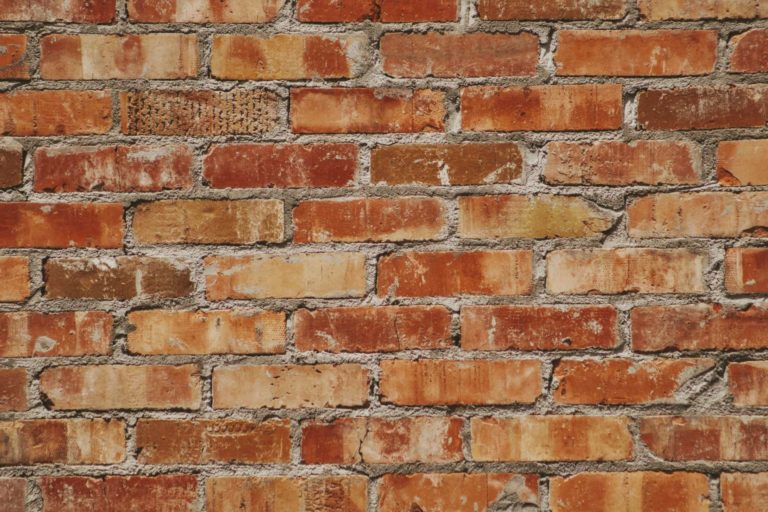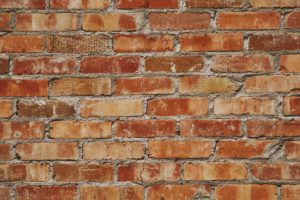Brick houses can be stunningly beautiful. They show strength, are sturdy, and as we all learned in the Three Little Pigs, they stand up to wind. That strength, however, needs to be maintained. Nothing stands forever without help.
What is Tuckpointing?
The Strength of the brick, and the tuckpointing within, needs to be maintained periodically. Tuckpointing is the process of removing and replacing the mortar joints in between the brickwork on your home (or any wall really). Generally speaking, you should re-do the Tuckpointing in your home every 10-15 years.
A Masonry Contractor will come out to evaluate and determine the extent of the repairs needed. Sometimes, spot Tuckpointing is all that is needed. Other times, all the joints need to be redone. It is important to maintain a good seal with the mortar joints between the brick.
Why is Tuckpointing Important?
Let us guess, you have lived in your home for 30 years and never did the Tuckpointing. We’ve also heard of people driving their cars 10,000 miles without an oil change and those who do not go to the doctor for 5 years. Doesn’t mean it’s a good idea.
Tuckpointing is vital for the health of your home for a number of reasons:
- It literally holds your brickwork (your house) together!
- Water intrusion from bad Tuckpointing can cause mold inside the walls.
- Water intrusion from bad Tuckpointing can cause Basement Flooding.
While we all understand the first point, what about the other 2 points? If we have a hole in the mortar, how does that translate to mold in the house and water in the basement?
Signs Brick Might Need Tuckpointing

- Cracked or missing mortar – The first and most obvious sign that your brick wall needs tuckpointing is when the mortar begins to crack or fall out. This can lead to water damage and weaken the wall’s structural integrity.
- Loose or crumbling bricks – If you notice that the bricks in your wall are loose or crumbling, it’s a sign that the mortar holding them in place is no longer doing its job. Tuckpointing can help repair the mortar and prevent further damage from occurring.
- Water damage or stains – If you see water damage or stains on your brick wall, the mortar has likely started to deteriorate and needs tuckpointing. Water can seep into the cracks in the mortar and cause damage to the bricks.
How Often Should Tuckpointing Be Done?
The frequency of tuckpointing largely depends on the condition of the masonry structure and the environment it is situated in. For instance, if the structure is located in an area with high humidity and precipitation levels, it will likely require more frequent tuckpointing. Similarly, if the masonry is subject to extreme temperature fluctuations or exposure to chemicals and pollutants, tuckpointing may need to be done more often.
Generally, it is recommended that tuckpointing should be done every 25-30 years, provided that the masonry structure is in good condition. However, tuckpointing should be done immediately if there are signs of deterioration, such as cracked or missing mortar joints, bulging, or spalling bricks. Waiting too long to address these issues can lead to more extensive and costly repairs later down the line.
In addition to regular maintenance, choosing the right materials and techniques for tuckpointing is essential. Using high-quality mortar that is compatible with the existing masonry is crucial to ensure the repairs will last. Additionally, proper attention should be paid to the depth and width of the joints–as well as the color and texture of the mortar–to achieve the desired aesthetic effect.
PLINKO
Hands in the air, who has seen Price is Right? Weather it is Bob Barker or Drew Carey, the Price is Right has a great game called PLINKO. This is where a flat disk is dropped into a slanted board, hitting pegs until it lands in a stall at the bottom. That’s about all we need to know about PLINKO to understand how water gets into the home from Tuckpointing.
Your brick work is not just one layer. In fact, there are multiple layers of brick that interlock together to form the wall. As mortar joints deteriorate, water can “PLINKO” it’s way into the home via these connected mortar joints.
Get It Done
That water can come in through the walls in the form of mold on the 1st and above stories of the home. You will see mold spots on the wall, experience elevated humidity, and will start to notice a “musty” smell in the home.
In the basement, you will notice water on the floor. If you catch it quick enough, you may be able to trail it up to the top of the wall. This seepage also leaves signs if you cannot see it. For instance, there can be debris on the top of the wall. This debris is brought in through the joints much like ants bring dirt out of a hole (a little at a time). The debris you see will be small and often gets caught in cobwebs, making it easy to spot.
On the outside, we have had many Tuckpointers miss these issues. Holes small enough to put a dental pick into can cause streaming water in the basement. Although the hole seems small, in heavy rains water can flow in and create seepage. Usually, these are recreated very easily by a water test with a hose (one of the only times a water test for basement seepage is worth doing).
How to Spot the Issues
Bottom line, get your Tuckpointing done. If you see any holes in the mortar, get them plugged (MINUS the weep holes at the bottom). We strongly suggest finding a reputable contractor to come perform the work. If you take it upon yourself and end up blocking the weep holes, you will create a larger problem. As always, hire a professional. It is important to also check the window and door seals at the same time. The goal is to keep water on the outside of your home from getting in.
Thanks for reading, and as always:
“Not Everything’s Better When Wet”







2 Responses
Thank you for sharing this informative article about concrete. I hope there are a lot of contractors that could read this and be guided accordingly.
Happy to help, thanks for reading!